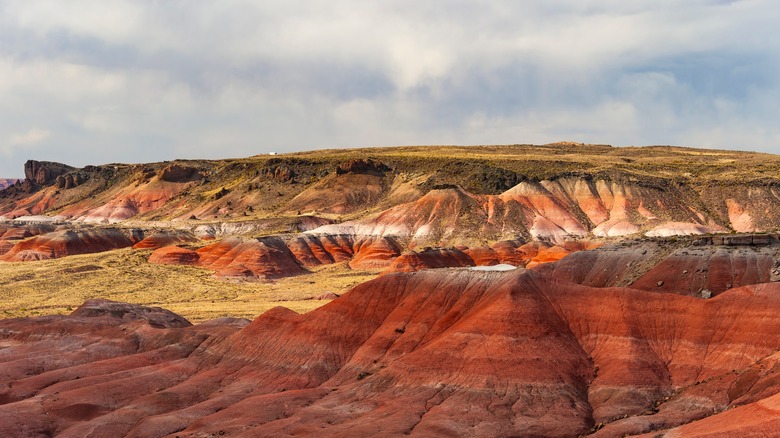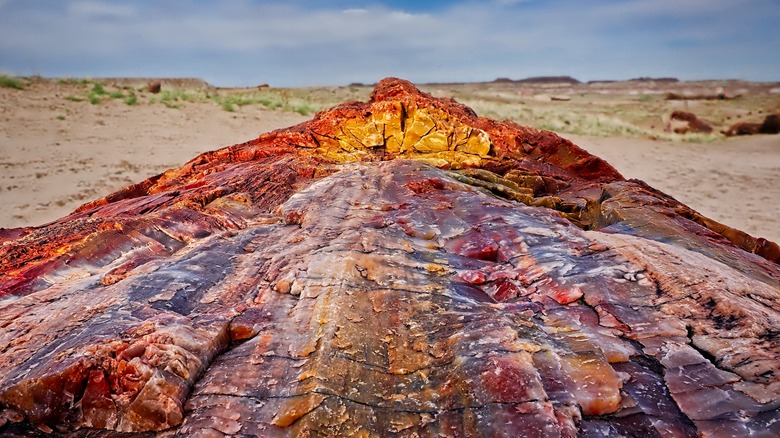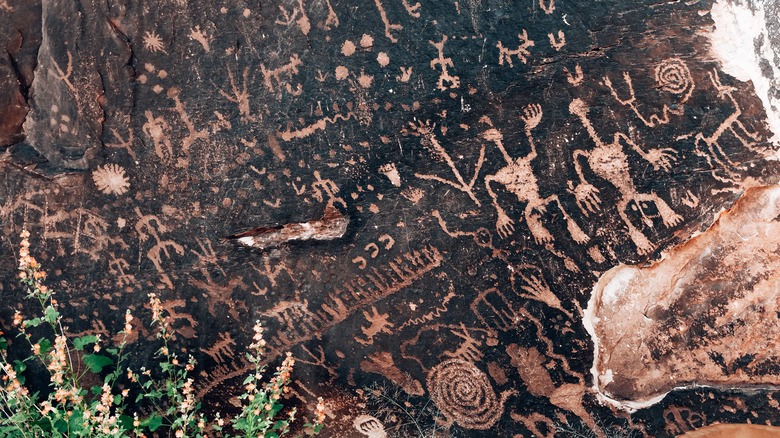Arizona's Awe-Inspiring National Park Boasts Fossils And The Most Colorful Desert Scenery
The creative hand of nature showcases itself in the incredible terrain of Arizona's landscapes, full of rugged mountains, sprawling deserts, and dramatic canyons that creative a visual feast for the eyes. The state's diverse topography includes the iconic Grand Canyon, the swirling Colorado River, Sedona's crimson rocks and notorious vortexes, the verdant Sonoran Desert, and incredible stargazing. Warm yellows, fiery reds, and soft sage greens color the terrain, complemented by the bright blooms of wildflowers and sturdy cacti.
Among the state's most celebrated national parks like Grand Canyon, and Saguaro, Petrified Forest National Park stands out for its unique geological features and it's ancient indigenous history. The park spans about 220,000 acres, and was first designated as a national monument in 1906 before becoming a national park in 1962. It captivates with its fossilized trees and brilliant badlands landscapes.
Located in northeastern Arizona, near Holbrook, it's roughly 18 miles east of the town. Visitors typically fly into Phoenix Sky Harbor International Airport, a three-hour drive, or use small domestic airports in Flagstaff or surrounding towns. Renting a car is advised, as public transportation is unavailable both to the park and within it, and the park's 28-mile scenic road is best explored by vehicle. Spring and fall offer mild weather and smaller crowds, making it ideal for hiking and soaking in the park's kaleidoscopic views, while late-summer monsoon season brings thunderstorms. Petrified Forest National Park is a journey into Arizona's historical depths and natural beauty, a literal gemstone of a park.
Vivid landscapes: petrified wood and painted desert
The Petrified Forest National Park delights with two iconic features: the Painted Desert and the petrified wood deposits, each a masterpiece of vibrant colors unearthed over time. The Painted Desert stretches across the park's northern expanse and showcases a canvas of stratified rock layers and bright pinks, purples, soft oranges and reds, made from iron, manganese and other minerals deposited in the land. This 150-mile-long area is visible from the park's scenic drive , dotted with pullouts for visitors to enjoy the wonderful views, especially during spring when wildflowers are bursting onto the scene in yellows and pinks. The Painted Desert Rim Trail, a one-mile round-trip hike brings visitors along the canyon's edge, showcasing wide-open landscapes and the historic Painted Desert Inn, a beautiful adobe structure from the 1920s that now serves as a museum.
In the park's southern reaches sits one of the world's largest collections of petrified wood, where ancient trees, buried over 200 million years ago, transformed into quartz-like crystals. These fossilized logs, sparkling under the suns rays, shimmer in dazzling hues like amethyst purple, citrine yellow, and smoky grays. They resemble giant gemstones dotting the landscape. Trails like the Giant Logs trail (under half-a-mile) and the Long Logs trail (about 1.5 miles) that set out from the Rainbow Forest Museum showcase the park's largest petrified logs, including "Old Faithful," which is nearly ten-feet-wide at its base and 35-feet-long.
The Rainbow Forest Museum itself offers educational paleontological exhibits. Strict regulations aim to protect these treasures and ensure their preservation for future generations, so do your part to leave no trace and take care of this brilliant natural area that took millions of years to form.
Echoes of ancient history
Petrified Forest National Park is a living library of human history, with over 13,000 years of cultural heritage preserved across more than 800 archeological sites. The park's lands, once home to Paleoindians, Ancestral Puebloans, and tribes like the Zuni, Hopi, and Dine, offer a window into ancient life. The Agate House Trail, a two-mile round-trip trek from the Rainbow Forest Museum, leads to a reconstructed Ancestral Puebloan village that was inhabited about 700 years ago and remains culturally significant to the Hopi and Zuni people. Its stone walls crafted from petrified wood stand as demonstration to ancestral ingenuity.
The Puerco Pueblo Trail, a paved three-quarter-mile loop winds through the remnants of a 100-room pueblo which was occupied over 600 years ago. Here visitors can try to decipher ancient petroglyphs on the walls, including one marking the summer solstice, while a small museum along the trail provides context through its cultural exhibitions.
Newspaper Rock is the highlight for petroglyphs in the area, featuring over 650 petroglyphs etched by the Puebloan people between 600 and 2,000 years ago. They depict animals, symbols, and human figures across a dense cluster of rock faces. Listed on the National Register of Historic Places, this site should not be missed. These ancient remnants, telling stories from bygone eras against the timeless desert expanse, invite reflection on the human connection to the land at this underrated outdoor paradise.


